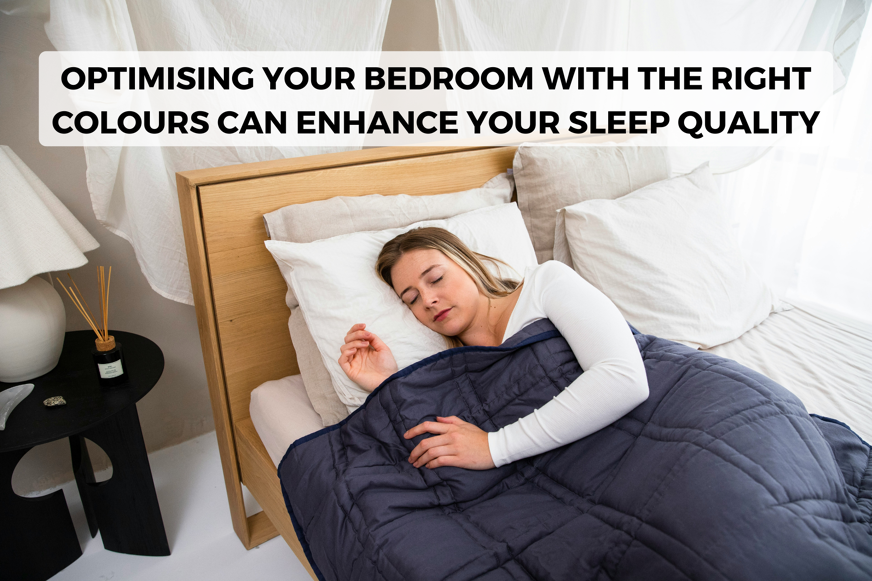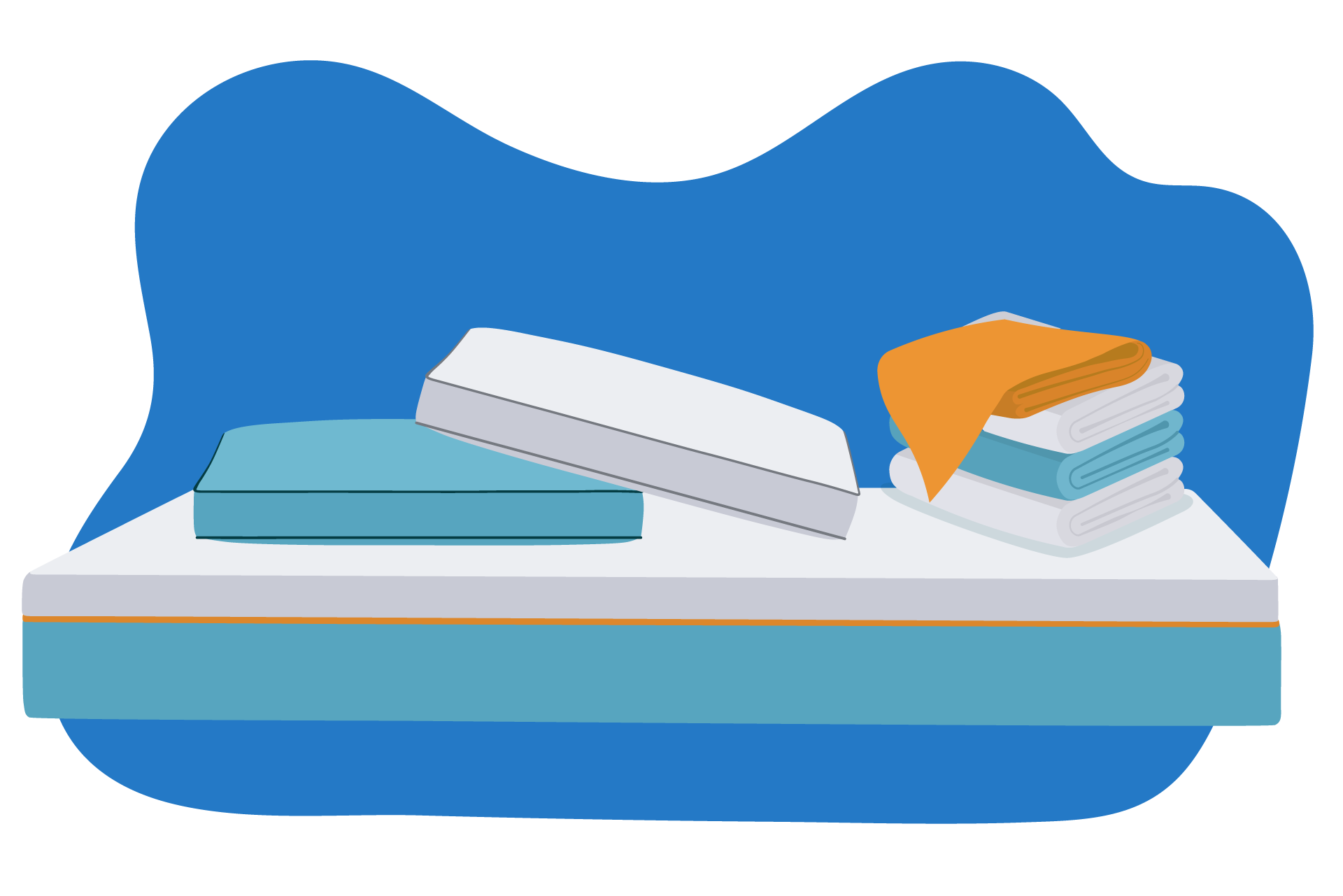Can colour affect sleep?
Yes, the colour of your bedroom can influence your sleep [1] by affecting both psychological and physiological responses [2] shaping your sleep environment. 💤

While this area is still under research, studies suggest that the colour of your room can impact several key aspects of sleep:
- Sleep duration: Certain colours are linked to longer sleep durations compared to others.
- Sleep efficiency: This factor, which reflects the percentage of time spent asleep while in bed, can be influenced by your surroundings, including the room’s colour.
- Sleep onset: The time it takes to fall asleep can be affected by visual stimuli in the bedroom, such as wall colours.
- Sleep stages: Colours may also impact the duration and proportion of different sleep stages, including deep sleep and REM (rapid eye movement) sleep.
Some colours even lower heart rate and blood pressure, encouraging relaxation and making it easier to drift off.
Conversely, other colours may have a stimulating effect, increasing cortisol levels and making it harder to unwind before bed.
The best colours for sleep
Creating a calm, dark sleep environment is key for quality rest, and we’d generally encourage you to keep your bedroom as dark (and quiet) as possible.
That said, certain colours can also significantly influence sleep quality, and this relates to the colours of your room’s decor and the light emitted by various sources.

So what are the best colours to help you sleep?
🔵 Blue: Relaxation
Blue is widely known for its calming effects, and is often linked to tranquility and serenity.
Studies [3] suggest that blue can lower heart rate and promote relaxation, making it an ideal choice for bedroom walls.
You may want to paint your walls in soft blue tones or add blue bedding.
Pair the colour with warm lighting for a cosy atmosphere.
🟢 Green: Tranquillity
Green is another excellent choice for sleep.
It evokes comfort, peace, and happiness, likely due to its association with nature [4].
Its calming effect helps create a soothing sleep environment.
Why not add some green pillows or throws to your bed, or even hang green curtains?
⚪️ White: Neutral
While white is technically not a colour, it’s still a great option for bedrooms.
It’s commonly associated with peace, security, and relaxation.
White rooms can aid sleep as they cause less brain stimulation [5] than brightly coloured spaces.
You can combine white walls with soft textures, like fluffy throws and cushions, for a minimalist yet inviting look.
When choosing the ideal colour for your bedroom, always keep personal preferences in mind.
Which colours should you avoid?
Just as some colours can help you feel more relaxed and drift off into a gentle slumber, other colours are less ideal for bedrooms.
🔴 Red: Excitement
Red is often considered the worst colour for a bedroom.
As a warm colour with the longest wavelength, it’s associated with excitement, fear, and anger.
Red rooms can be overstimulating, raising blood pressure [6] and heart rate.
🟠🟡 Orange and yellow: Energising
Similar to red, orange and yellow are warm colours that may be too overstimulating for a bedroom environment.
Their energising properties can interfere with relaxation before bedtime.
⚫️ Black: Negativity
Although darkness is crucial for sleep, black walls might not be ideal.
Black is strongly linked to negative emotions [7], like depression and fear, which can impact your mood when you wake up.
Beyond colour, hue and saturation also play a part - we'll look at this next.
Does the brightness of your bedroom colour matter?
The brightness of a colour can greatly influence its effect on sleep and mood.
Brighter colours often evoke positive emotions [8], but they can also be more stimulating.
When selecting a bedroom colour, consider shade and brightness to find the most calming combination for your needs.
So which colour should you choose to help you sleep better?
Choosing the right colours for your bedroom can have a significant impact on your ability to relax and enjoy restful sleep.
By incorporating calming tones like blue or green and avoiding stimulating shades, you can create an environment that promotes relaxation and better sleep quality.












Alternatively, message us directly via the Contact Us page.